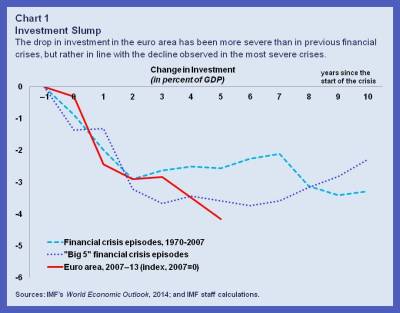BRUSSELS (AFP) - Greece and its sceptical European partners neared a much-needed compromise on Friday over a request by Athens to extend an EU loan programme that expires this month, with sources saying a determined Germany had been satisfied.
The euro zone’s 19 finance ministers were gathered in Brussels for the third time in little over a week to consider Athens’ take-it or leave-it proposal.
“It seems that there is a deal in the form of a statement,” a European source told AFP.
“We must wait because this is not yet official and certain delegations may still raise objections,” the source added.
Another European source said: “There’s a general optimism", adding that there was talk of only a four-month extension.
The effort to write a final deal statement is what torpedoed two earlier Eurogroup meetings, with deep divisions between Germany and Greece over the conditions of extending the bailout.
Greece made the formal request for the loan extension on Thursday, offering concessions including a return – if not in name – of the hated “troika” of creditors that had audited the Greek economy during the bailout.
Eurogroup head Jeroen Dijsselbloem worked overtime Friday to get the make-or-break meeting back on track as Germany insisted Greece stick with the austerity commitments included in the loan programme.
“I do not have to tell you it’s quite complicated ... there is still reason for some optimism but it is very difficult,” Dijsselbloem, who is also Dutch finance minister, said of the Greece-Germany stand-off before the start of talks.
“I will now go back to try to get the show back on the road,” he said.
A Greek source said the discussions were on “a new package of concessions” beyond those contained in the Greek letter sent Thursday seeking a six-month extension to its bailout programme.
Arriving for the talks, Greek Finance Minister Yanis Varoufakis said he hoped for a deal, given the effort made by Athens.
“The Greek government has gone not the extra mile but an extra ten miles and now we are expecting our partners to meet us not half way, but one fifth of the way,” he said.
MERKEL, HOLLANDE URGE ACCORD
German Finance Minister Wolfgang Schaeuble on Thursday rejected the Greek request out of hand but a lengthy phone call between Greek Prime Minister Alexis Tspiras and German Chancellor Angela Merkel appeared to calm the waters.
Meeting in Paris Friday with French President Francois Hollande, Merkel said the German position “since the beginning of the Greek programme” had been that Greece remain in the euro.
Berlin “would do everything to continue along this path,” she said.
Hollande said: “Greece is in the euro zone. Greece has to stay in the euro zone.” The Merkel-Tsipras call came after a Greek government source released a document said to outline Berlin’s defiant stance at lower-level talks Thursday.
Greece’s proposal “is not clear at all... a Trojan horse, intending to get bridge financing and in substance putting an end to the current programme,” the German statement said, according to the source.
Time is pressing to find a solution before the current bailout programme ends, for fear that failure could see Greece run out of money and be forced out of the euro zone within weeks.
A top European official said the stand-off had come down to a clash of personalities with Schaeuble furious at the negotiating style of the casual and fast-talking Varoufakis.
The issues go beyond that, however, and echo a divisive debate in the European Union whether the austerity policies adopted to cope with the debt crisis have done more harm than good.
For Germany, fiscal discipline and tight spending controls are the only basis for the sustainable growth needed to deliver much-needed jobs.
GREEK CONCESSIONS
In its request, Greece offered some major concessions including a return, if not in name, of the hated “troika” mission of creditors that has overseen Athens’ finances through two bailouts.
Tsipras insists he can satisfy both the demands of Greece’s partners and meet a promise to voters to end the detested austerity conditions which he says destroyed the economy.
“The government... is not asking for an extension to the memorandum,” an official source in Athens said, referring to the reform agreement between Greece and the troika – the EU, European Central Bank and International Monetary Fund creditors.
Instead, it wants an extension to the loan part of the mammoth 240-billion-euro (S$370-billion) rescue that came with commitments to push through austerity and deep reforms.
Germany says this distinction is unacceptable and Greece has to accept the austerity commitments of the full programme.






